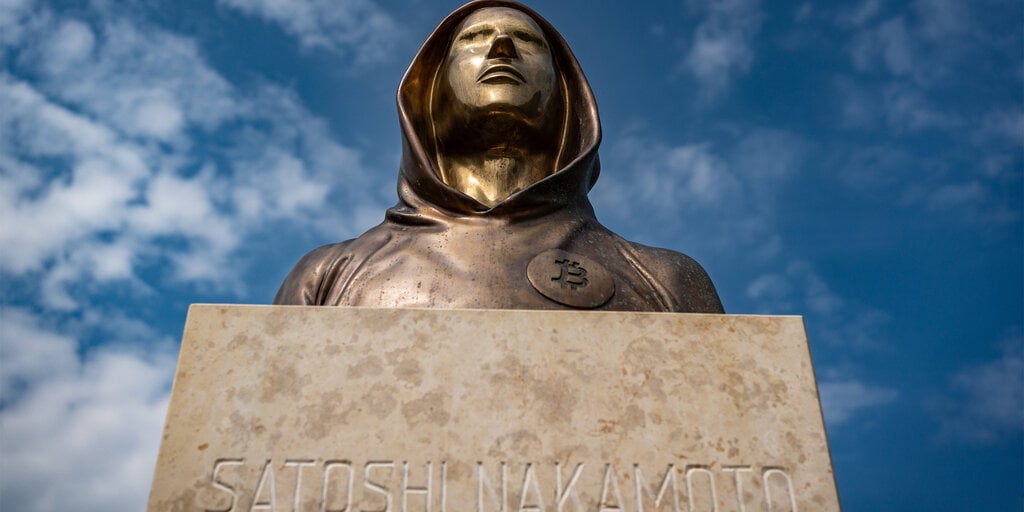The court case between the Crypto Open Patent Alliance (COPA) and Craig Wright, the self-proclaimed inventor of Bitcoin, is unlikely to yield any blockbuster revelations. But the release of emails from Satoshi Nakamoto, the pseudonymous creator of Bitcoin, has provided a surprising history lesson for the burgeoning cryptocurrency.
The most recent Bitcoin creator emails, dated between February 5, 2009 and July 12, 2010, were to computer scientist and software developer Marty Malmi, an early Bitcoin contributor who went by the nickname Sirius. Malmi took the stand to testify in the COPA and Wright case on Wednesday.
“Sending cash by mail may have its risks, but it's probably still the best anonymous option,” Nakamoto once wrote, advocating the analog method as a way to preserve identity. “On the forum we can also ask for contributions in BTC.”
Messages between Nakamoto and Malmi were entered into evidence when a UK court revealed the disputed identity of Bitcoin's creator. Since 2016, Australian computer scientist Craig Wright has claimed to be a Bitcoin investor.
On Thursday, the court received preliminary emails sent to cryptographer and cypherpunk Adam Back – CEO and founder of Blockstream – to accompany Back's testimony. Those emails include references to computer scientist Hal Finney, who received the first Bitcoin transaction from Nakamoto and who some believe is the real Satoshi Nakamoto.
Like the previous email dump, the 120-page collection of messages came to light via Twitter by Bitcoin historian and Bitcoin Magazine editor Pete Rizzo.
While Bitcoin is the number one cryptocurrency with a trillion dollar market capitalization, the emails show that Nakamoto did not coin the term “cryptocurrency” and is not comfortable calling Bitcoin an investment.
“That's a dangerous thing to say and you have to delete that bullet point,” Nakamoto told Malmi. “It's okay if they come to that conclusion on their own, but we can't count on that.”
Although politicians and researchers continue to refer to Bitcoin as anonymous, the messages show that Satoshi wants to remove that language from the Bitcoin.org website.
“Also, anonymous voices are a little shady. I think people who want to remain anonymous will still find out without us blowing the trumpet,” Nakamoto said. “I removed the word ‘anonymous', and the phrase about ‘anonymity' means that—however carefully you define it—it can be hidden… It was a shame to remove it.
In one message, Nakamoto detailed how Bitcoin will scale in the future, stating that the network will have a maximum of 100,000 nodes.
“100,000 block generating nodes is a good ballpark size to think about,” Nakamoto wrote. “Broadcasting a transaction twice across the entire network eats up the total. [$0.02] Bandwidth at today's prices.
In his comments, Rizzo stated that there are currently 50,000 nodes running Bitcoin software.
Nakamoto suggested to Gavin Andresse to add more server administrators.
“It has to be Gavin,” Nakamoto said. I trust him, he is responsible, professional and technically more linux capable than me.
While proof-of-stake has been praised for reducing the drain on the environment, in his messages, Nakamoto described peer-to-peer as “the only solution to doing e-cash without a trusted third party.” “
“Even if I'm not using it as a second step to allocate the initial currency distribution, PoW is fundamental to coordinate the network and prevent double spending,” Nakamoto wrote.
Wright provided more than 160,000 accounting documents to Bitmax Research on Wednesday in an effort to prove he was Satoshi Nakamoto.
“Satoshi's true proof will generally only be like 150 bytes,” said Bitmax Research in a tweet by prominent Bitcoiner, software engineer and cypherpunk James Loup. Instead, he produced 160,000 pages of false evidence.
Edited by Ryan Ozawa.
Stay on top of crypto news, get daily updates in your inbox.














